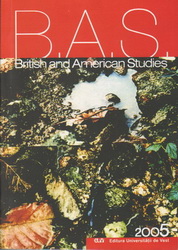OF BYRON’S MANFRED, LAMB’S GLENARVON, PANTOMIME AND THE LIBERATION OF THE BYRONIC HERO
OF BYRON’S MANFRED, LAMB’S GLENARVON, PANTOMIME AND THE LIBERATION OF THE BYRONIC HERO
Author(s): Monika CoghenSubject(s): Literary Texts
Published by: Editura Universităţii de Vest din Timişoara / Diacritic Timisoara
Keywords: Byron; Glenarvon; Gothic tradition; irony; Lamb; liberation; Manfred; pantomime
Summary/Abstract: This paper offers a reading of Manfred in the context of the early nineteenth- century stage, examining the use of the Gothic devices in Byron’s drama. It also suggests that Manfred might contain an ironic response to Lady Caroline Lamb’s scandalous novel Glenarvon. My suggestions that Manfred might be read in relation to Glenarvon are not meant to question the sources of the drama apparent to Byron’s contemporaries, and long since investigated by the critics. The indebtedness of Byron to the Gothic tradition, to Goethe’s Faust and Aeschylus’ Prometheus is unquestionable. The protagonist is widely acknowledged as the apogee of the Byronic hero (see Chew 1915:74, Manning 1978:71). However, I want to argue that Manfred is not so much the continuation of the tradition of the Tales, but an attempt to move beyond this tradition. Byron is using all the machinery of the Gothic in order to juxtapose it with the triumph of individual consciousness. The very use of the apparatus of a typical Gothic play might point to the inherent irony of the drama. This irony, moreover, might be perceived as both self-irony, and irony directed at the image of Byron created by early nineteenth-century English society, in particular as represented in Caroline Lamb’s Glenarvon.
Journal: B.A.S. British and American Studies
- Issue Year: 2005
- Issue No: 11
- Page Range: 149-159
- Page Count: 11
- Language: English

